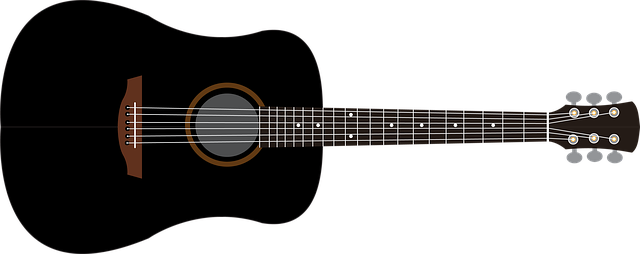
The notes on the E string are Home base for knowing your way around the fretboard
There are many ways to figure out the notes on the guitar fretboard, but it all starts with knowing the notes on the E string. And when you can figure them out, then you can learn to recognize them quickly, if not instantly.
Why is the E string so important?
Well, for one thing, the guitar in standard tuning has not just one E string, but two. So, you get double the return for your efforts to learn the notes. After all, the notes on the High E string are the same as the notes on the low E string. An E string is an E string, I guess you could say.
But another important factor that makes knowing the notes on the E string so important is that the E strings frame your guitar. One E string at the top, and another at the bottom. The E strings are the edges of your guitar fretboard universe.
There’s comfort in being familiar with the E string because it makes it seem like the guitar fretboard is a closed system. And it is. It starts with the notes on the E string, and it ends with the notes on the other E string.
If you think of it that way, the guitar begins to look a little less like an infinite number of unidentifiable fret-and-note locations, and more like something you can actually manage if you just work at it a little bit. That’s an important psychological shift!
The Low E string is extra special
And particularly, there’s some psychological pull toward the Low E string that just makes you feel at home. Know your notes on the E string, and that low E string becomes a safe and comfortable home base.
Maybe it’s not just psychological after all. The Low E string holds the lowest, “beefiest” notes you can play on the instrument. Those are the notes that fill out the bottom end and help make your guitar playing sound full.
The notes on the E string–again, the low E string in particular–guide you in forming many chords. They help you understand chord progressions.
So, let’s just agree that the notes on the E string are special. And knowing them is super important to you in your quest to learn to play the guitar.
You gotta do the work
Sorry; there’s no magic trick to learning them. You simply just have to find them and memorize them so that you can identify them instantly.
While there is no shortcut to knowing the notes on the E string, there is a simple technique, and that’s what I’ll share with you here.
Make sure you understand the major scale
First, let’s think about the C major scale.
If you don’t know how the major scale works, then read my Understanding the Major Scale is Foundational Music Theory article. You’ll need that knowledge to follow along.
Now, the C major scale…What could that possibly have to do with learning the notes on the E string? Good question.
Recall that the C major scale has all natural notes. That is, it contains no sharps or flats. That makes it the easiest major scale to remember. The notes are simply C, D, E, F, G, A, and B.
Now here’s some good news about the notes on the E string: the E string (well, just like every string) holds every one of those natural notes. In fact, the E string holds all 12 chromatic notes, but here we’re particularly interested in those natural notes on the E string.
Find the natural notes on the E string
So, you can easily find all of the notes of the C major scale–that is, all of the natural notes–along the E string. Just start at the open E string. That, of course is the note E.
You know from the major scale recipe I shared in the article mentioned above that the next note above E in the C major scale is one half step up, and that’s the note F. And you know from that same article that to move one half step up on the guitar, you move one fret. So, press fret 1 of the E string and you have the note F.
Now, just continue to use the major scale recipe to move up the neck to identify the rest of the notes on the E string. Two frets up from F you have G at the third fret. A whole step up to A at the fifth fret. Then a whole step up to B at the seventh fret. A half step takes you to C at the eighth fret. Next a whole step to the 10th fret gives you the note D. And finally another whole step up to E at the 12th fret.

Rinse and repeat
Easy, right? But wait; you have more frets. Some guitars might have as many as 12 more frets. What about those notes?
Well, that same article talks about octaves, and you now know that at fret 12 you are at E again. That’s one octave higher than where you started. And what do you do when you reach a new octave? You just repeat what you did for the first octave.
In other words, the pattern simply repeats itself. The 12th fret is the same note as the open string. The 13th fret is the same note as the first fret. The 15th fret is the same note as the third fret, and so on until you run out of frets. If you had an infinitely long guitar neck, the notes on the E string would just repeat endlessly every twelve frets.

What about the other notes?
So, that’s it. Playing the C major scale on the Low E string is your easiest technique for identifying the notes on the E string.
Hold on; didn’t we skip a bunch of important notes? After all, the C major scale only contains seven of the 12 possible notes. Yes, that’s true.
But here’s some good news for you: you don’t need to memorize all of those other note locations. It’s not that the sharps and flats aren’t important–they most certainly are. But once you know the natural notes on the E string, you can easily identify the sharps and flats.
For example, say someone tells you to play an F#. You just figured out that you can find the note G at the third fret. Once you know where that G note is without even thinking about it, it’s just as easy to not think about the fact that the F# is just one fret down from there.
Or somebody tells you to play a Bb note. You know where the notes A and B are, so Bb has got to be in between them. A is at fret 5 and B at fret 7, so you instantly know that Bb is at fret 6.
Guitar designers want to help you
Yeah, but it takes time to count up to fret 5 or fret 10, and it can be embarrassing when you have to count each fret one by one while more experienced players impatiently watch and wait for you to catch up. You feel like a kindergartner around a bunch of college seniors. Trust me; every guitar player has been there. But don’t worry; guitar designers have you covered here too!
Of course you’ve noticed that some frets on the guitar have some type of marking on them. Typically it’s an inlay dot, but some guitars have fancier designs.

And you’ve probably also noticed that there’s an additional marker at the fret on the top side of the fretboard that you can easily see as you’re looking down at the guitar so you don’t have to twist the guitar or strain your neck trying to look at the face of the fretboard.
These dots or markers will be your constant guides as you play. And pretty much every guitar uses the same pattern for these markers. Learn these markers and you’ll be able to find the notes on the E string even faster.
Helpful fretboard markings make life easier
So, how do they work? They work by marking off important fret locations for you. Of course, you don’t need a marker to find the open string, and you don’t really need one to find the first fret. Therefore, many–if not most–guitars don’t have a marker on the first fret.
But when you’re in the heat of a smokin’ number and you have to find the third fret, it’s super helpful that most guitars have a marker at fret 3. And as we already learned, fret three corresponds to the note G on the E string.
The next marker sits at fret 5. That’s the note A on the E string.
The next marker sits at fret 7. B on the E string.
Starting to get the picture? Those markers helpfully line up with the natural notes on the E string. That makes it real easy to memorize those notes. E is open, F is one fret up, G is at fret three (normally the first or second marker), A is at fret 5, and B is at fret 7.
A logical change in the markings pattern
Well, if you keep following that pattern, then you learn that the marker at fret 9 seems to miss its target. You might have logically expected that the next marker would identify the next of the natural notes on the E string: the C note.
But it does not. The marker at the ninth fret identifies a C#/Db note. And if you think about it, it’s better that way. After all, if there was another marker at the eighth fret (where C is) then you’d have two frets in a row with markers. It might be easy to get confused, and besides, the guitar would just look more cluttered.
So, designers stuck with the every-other-fret pattern, and the ninth fret marker lands on a non-natural note. But it’s OK. It’s easy enough to remember that C sits just below that marker, and D sits just above it.
Marking the octave
Finally, another break in the pattern skips from fret 9 all the way to fret 12. That’s the octave, and it’s a special location. Because it’s so special, the marker at the 12th fret is also usually special. Most often you’ll find two dots at this fret.
Rinse and repeat…again
And you’re not out of markers yet. But just as the notes on the E string starting at the 12th fret repeat the same pattern of notes starting at the open string, so too do the markers repeat the same pattern.
So, the marker at fret 15 identifies the note G. The marker at 17 identifies the note A. And so on until you run out of frets and out of notes on the E string.
Conclusion
And that’s all there is to it. You now have a logical method for finding the notes on the E string so that you can easily begin to memorize their positions.
The E string on a standard-tuned guitar is special. The low E string acts as a comfortable home base for the guitar player.
For this reason, it’s very important for you to instantly identify the notes on the E string. And there’s no way to cheat the system. It’s just something you have to memorize so you can find the note you want instantaneously.
But there are some things that make it easy for you to identify the notes on the E string so you can begin your memorization task.
Applying the C major scale pattern to the E string helps you quickly discover where the seven natural notes are. The dots or other patterns on the fretboard help you always know what fret you’re looking at, and thus what note corresponds to that fret.
And these techniques make learning the notes on the E string quite easy. It won’t take you any time at all. But the time it does take, will be well worth it in your quest to becoming a guitar player. So, learn the notes on the E string. Do it now!
5 comments